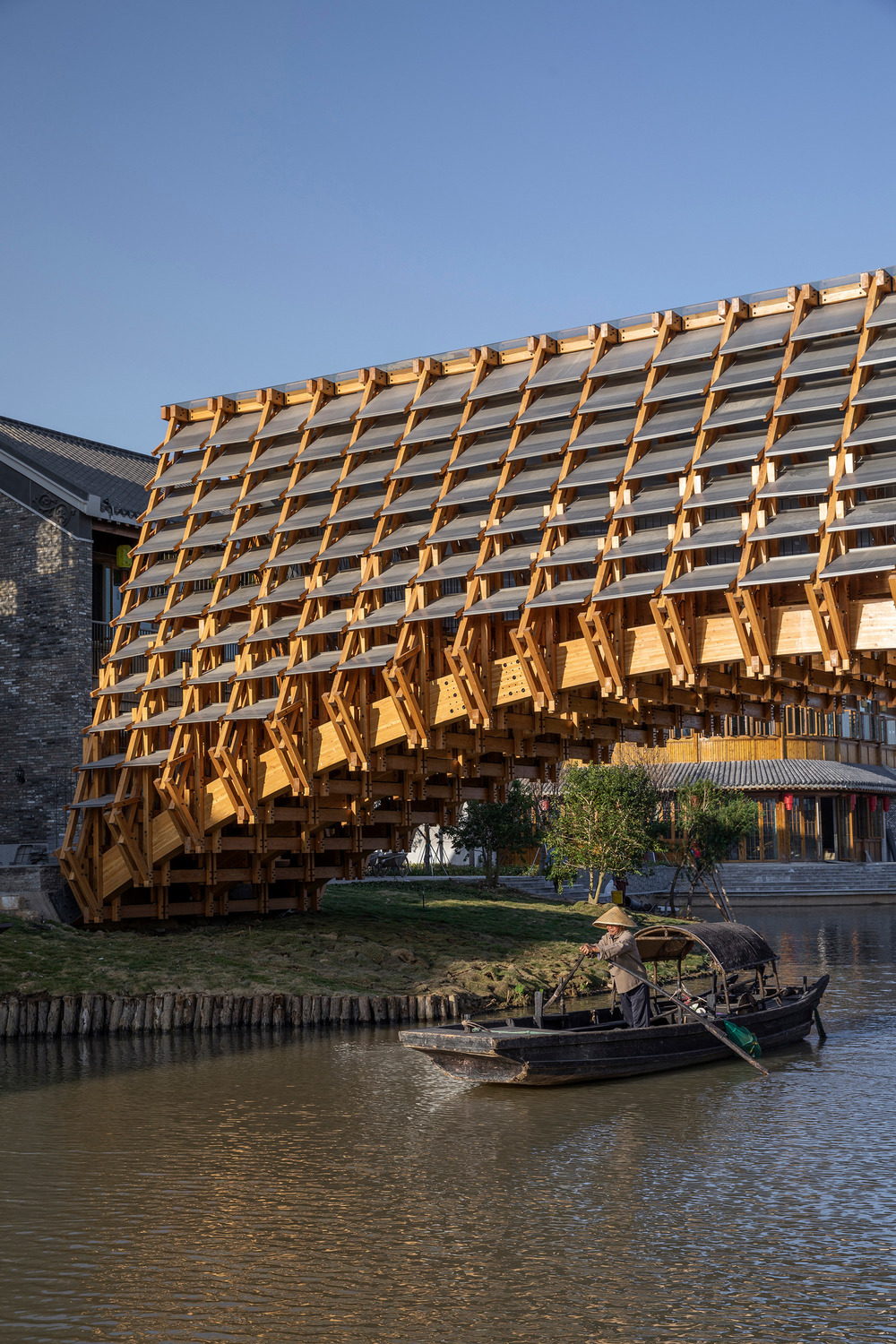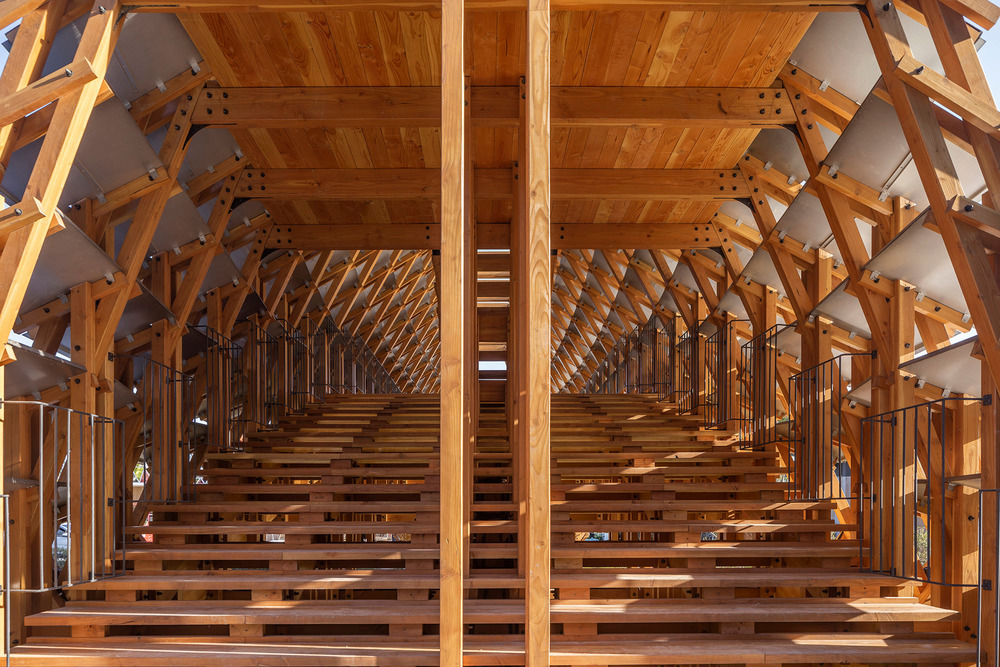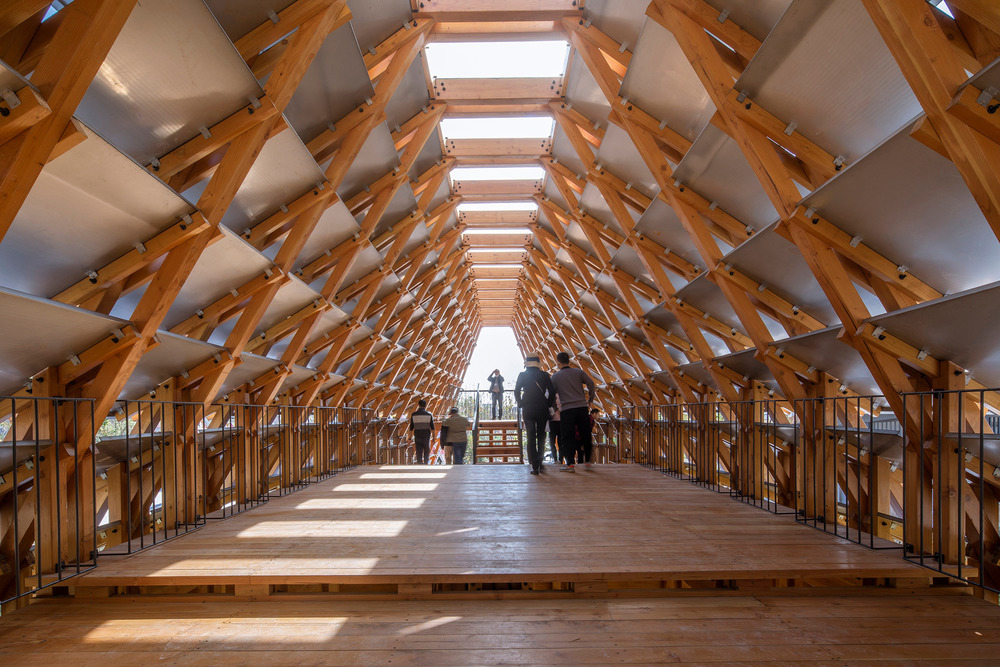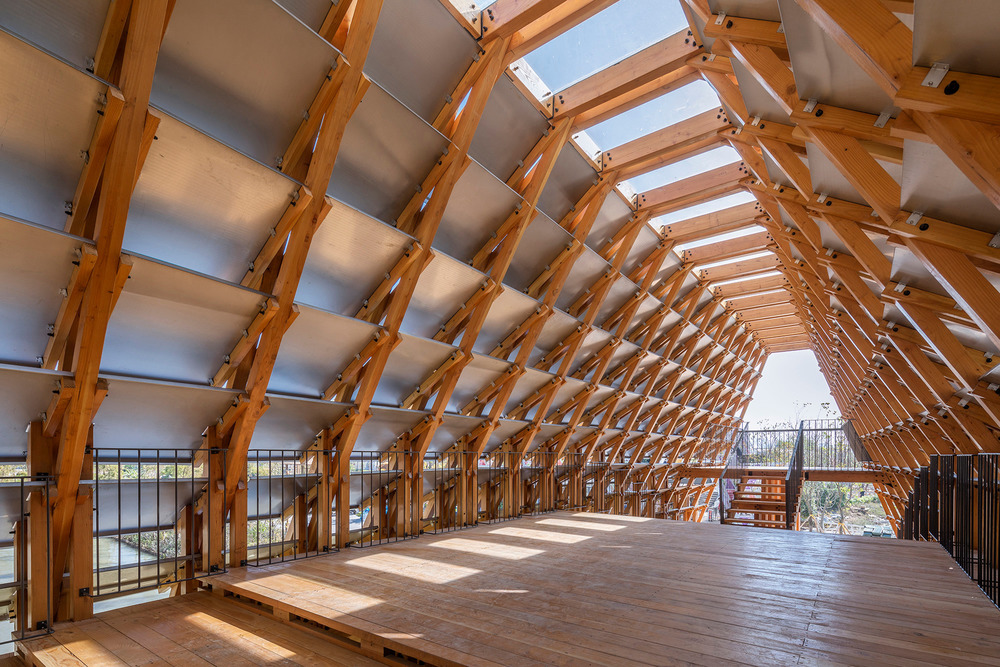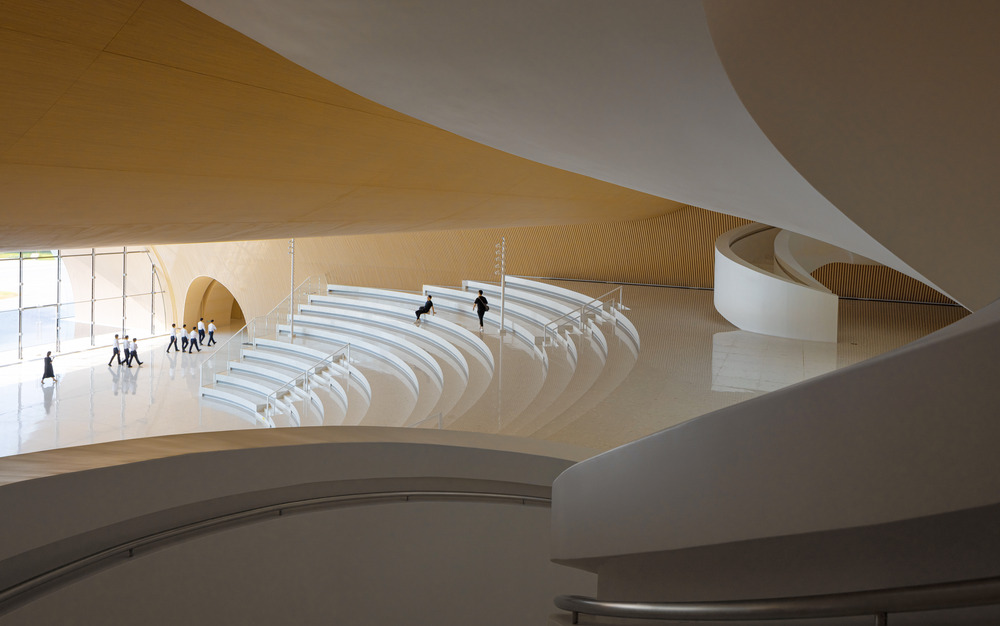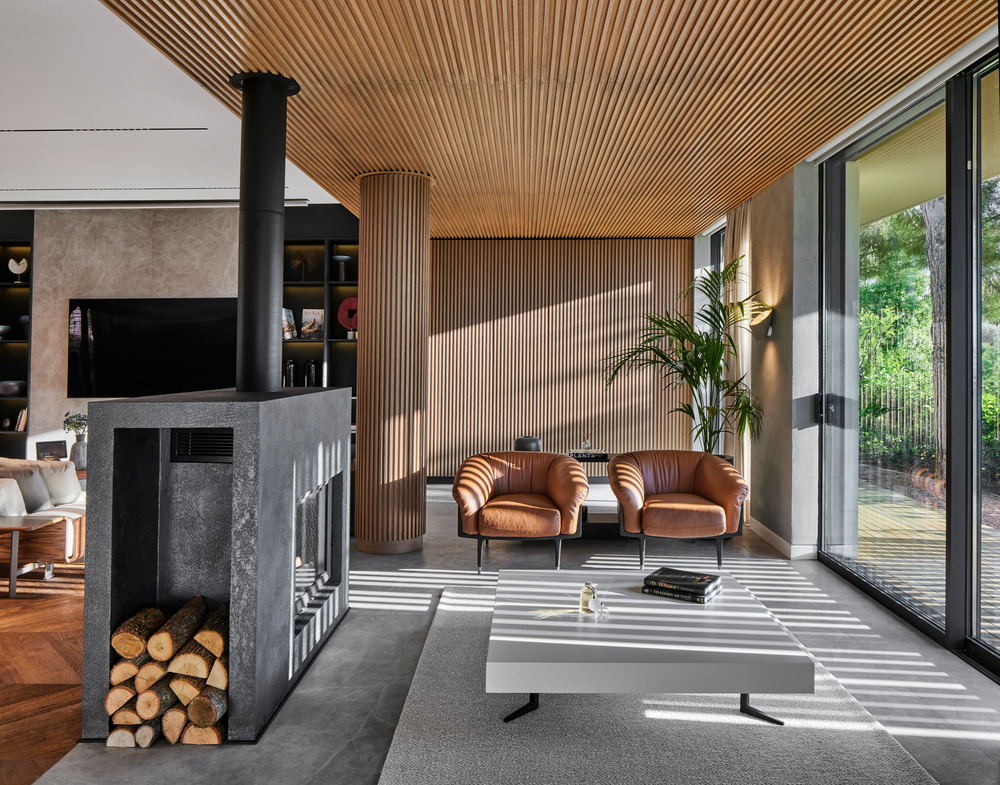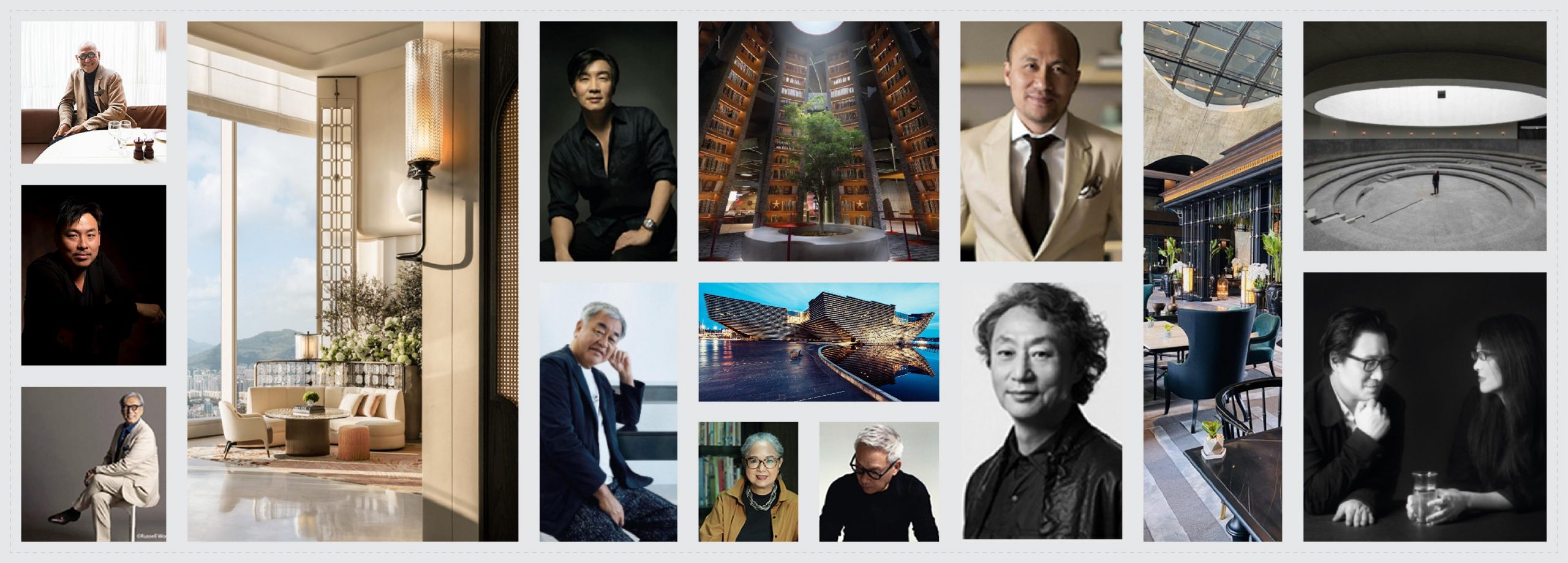Gulou Waterfront is an eco-cultural tourism resort in Jiangmen, China. This project is a timber bridge, which is one of many in the Gulou Waterfront Resort. To differentiate this bridge from other urban constructions, while infusing traditional rural culture, LUO studio adopted natural wooden materials to construct an arched bridge.
The resort provides access for small fishing vessels, as well as large tour ships, considerations have to be given to ensure that the bridge meets the clearance requirements for large tour boats to pass through.
- Photo credit: Jin Weiqi
- Photo credit: Jin Weiqi
- Photo credit: Jin Weiqi
- Photo credit: Jin Weiqi
The ridge is located at the intersection of a dense traditional commercial street and a children’s recreation zone. LUO studio created a relatively “closed” corridor space on the timber bridge, which is different from other open landscape bridges in the resort. The goal was to contrast the commercial street area with the children’s recreation area, to allow visitors to experience a sort of ceremonial moving process.
Constructing a covered corridor on bridges is an old tradition dating back to China’s Warring States Period. The initial intent was to strengthen the bridge structure, resist rain and moisture, keep the wood dry, and prevent it from corrosion.
LUO Studio inherits this ancient construction wisdom with the use covered bridges – the covered corridor enhances the bridge’s overall structural stability and protects the arched wooden structure beneath from exposure to sun and rain.
The west area of the Pearl River Delta, where the timber bridge is located, has abundant rainfall, so the corridor was constructed in a relatively closed form. The exterior of the corridor space is covered by layers of metal plates, which effectively protect it from rain and create a sense of cohesion for the space.
- Photo credit: Jin Weiqi Photo credit: Jin Weiqi Photo credit: Jin Weiqi Photo credit: Jin Weiqi
- Photo credit: Jin Weiqi Photo credit: Jin Weiqi Photo credit: Jin Weiqi Photo credit: Jin Weiqi
- Photo credit: Jin Weiqi Photo credit: Jin Weiqi Photo credit: Jin Weiqi Photo credit: Jin Weiqi
Source: V2com




